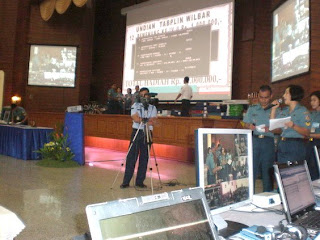 Frost & Sullivan awards Cyberoam Emerging Company of the Year for Network Security in Asia-Pacific Success attributed to its Innovative Product Line – Identity-based integrated security appliances
Frost & Sullivan awards Cyberoam Emerging Company of the Year for Network Security in Asia-Pacific Success attributed to its Innovative Product Line – Identity-based integrated security appliances(Ahmedabad, India 22 September, 2008) Cyberoam, the industry leading identity-based Unified Threat Management (UTM) range of appliances from Elitecore Technologies, announced today that Frost & Sullivan, the renowned global consulting company, has presented it with the 2008
Asia Pacific Emerging Company of the Year award for Network Security.
The prestigious award from Frost & Sullivan not only recognizes Cyberoam UTM’s unique identity-based security which effectively controls user-targeted external threats as well as insider threats, but also validates its architectural flexibility, targeted vertical focus, product innovation and R&D. Its strong emphasis on R&D is identified as a key factor behind Cyberoam’s growing success and global recognition in the network security space.
Arun Chandrasekaran, industry manager at Frost & Sullivan said, “One of the biggest strengths behind the success of Cyberoam is its innovative - identity-based integrated security appliances.” He adds, “Cyberoam has effectively used its sales and marketing resources, as well as technical superiority to gain a firm foothold in the market. Its products have found wide acceptance among businesses across various geographies, within a short span of time.
Cyberoam has successfully rolled out its enhanced multicore appliances with high performance, offering one of the best price/performance ratios in the industry.
Frost & Sullivan Awards are among the principal security awards in the industry. We are honored to receive this award,” said Harish Chib, Vice-President – New Business Development – Cyberoam. “This award is recognition of our ongoing commitment to meeting our customer needs by providing them with the best products and services that provide security against evolving threats.”
Cyberoam identity-based Unified Threat Management appliances provide the complete range of security features like Stateful Inspection Firewall, VPN, Gateway Anti-Virus, Gateway Anti-Spyware, Gateway Anti-Spam, Intrusion Prevention System, URL/Web Content Filtering in addition to Bandwidth Management and Multiple Link Management over a single platform.
Cyberoam has moved into 55 countries within a span of 2 years, including USA, UK, France, Switzerland, Australia and more, displaying speed in execution.
About Cyberoam
Cyberoam Identity-based UTM appliances offer comprehensive protection against existing and emerging Internet threats, including viruses, worms, Trojans, spyware, phishing, pharming and more. Cyberoam delivers the complete range of security features such as stateful inspection firewall, VPN, gateway anti-virus and anti-spyware, gateway anti-spam, intrusion prevention system, content filtering in addition to bandwidth management and multiple link management over a single platform. Cyberoam is certified by the West Coast Labs with CheckMark UTM Level 5 Certification, ICSA Labs, an independent division of Verizon Business, and is a member of the Virtual Private Network Consortium. Cyberoam has also received 5 star rating from SC Magazine in both 2007 and 2008, the 2007 Global Excellence Awards for Integrated Security Appliance, Security Solution for Education and Unified Security, and the 2007 Tomorrow’s Technology Today Award for Unified Security. Cyberoam has offices in the USA (Woburn, MA) and India. For more information, please visit www.cyberoam.com.
About Elitecore Technologies Limited
Elitecore Technologies Limited is the global provider of Cyberoam UTM appliances. Elitecore’s other divisions include Crestel Convergent Billing Solution that meets the voice, data, video billing and customer care requirements of Tier-1 service providers and 24online Billing and Bandwidth Management Solution for hotels, hotspots and Internet service providers. Elitecore has a strong R&D base and support center in India; it has sustained a healthy growth rate of over 75 % since inception. For more information, please visit www.elitecore.com
About Frost & Sullivan Frost & Sullivan, the Growth Partnership Company, partners with clients to accelerate their growth. The company's TEAM Research, Growth Consulting and Growth Team Membership empower clients to create a growth-focused culture that generates, evaluates and implements effective growth strategies. Frost & Sullivan employs over 45 years of experience in partnering with Global 1000 companies, emerging businesses and the investment community from more than 30 offices on six continents. For more information about Frost & Sullivan’s Growth Partnerships, visit http://www.frost.com






















